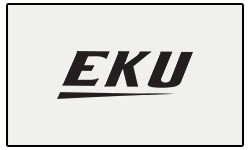Changes in Knowledge and Management Skills of ANMs To Screen, Manage and Refer Pregnant Women with Five High-Risk Conditions: Results from A Pre-Post-Training and A Six-Month Follow-Up Assessment in Telangana, India
Abstract
Hanimi Reddy Modugu, Chetan Purad, Padmaja S, Aparna Addala, Sandhya Dittakavi, Siri Chandana Reddy Alla, Karthik Yadhati, Ramesh Padmabhan and Aparna Hegde
Background: Auxiliary Nurse Midwives (ANMs) are key providers of maternal, newborn and child health services, and are the first point of contact for high-risk pregnancies (HRPs). In partnership with Government of Telangana, under Integrated High- Risk Pregnancy Tracking and Management (IHRPTM) program, all the ANMs of the state were trained to screen and manage five HRPs: anaemia; gestational diabetes-GD; pregnancy induced hypertension-PIH; ante-partum haemorrhage-APH; and quality-Antenatal care (ANC). Assessed pre- and post-class-room and six months after class-room training capabilities of ANMs.
Methods: Immediate-gains through class-room-training and six-months after class-room training knowledge/skills from 7,553 and 529 ANMs respectively, were assessed using a checklist of 15 questions per HRP-condition. Also obtained, qualitative insights about class-room training.
Results: Due to class-room training, there was 8-17% improvement in immediate-gain in knowledge/skills to diagnose, manage/ refer women with HRPs. Improvement in mean correct responses (out of 15 questions per-HRP) between pre-and-post-training assessments was maximum for GD: mean 7.6 at pre-training, improved to 10.2 by post-training; APH: 9.7 to 11.7; quality- ANC: 10.2 to 11.7; PIH: 9.3 to 10.7; and anaemia:11.0 to 12.3. Gain in knowledge/skills as Cohen’s-d effect-size was large (0.7-0.8) for GD, APH, quality-ANC, PIH, and medium (0.6) for anaemia, as pre-training knowledge/skills was already better for anaemia. Mean gain per HRP was more than three questions in four districts and < 0.5 questions in two districts. Mean gain did not differ much according to age, work experience and training-time. As compared to pre-training level, retention of knowledge/skills, six-to-nine months after class-room training dropped substantially (Cohen’s-d effect-size≤ 0.2) for all HRPs,except for anaemia (d=0.4). Training gave them confidence to stabilize emergency cases at sub-centre level before referring to higher facility!
Conclusion: Through IHRPTM’s protocol-based training: screening, management/referral of HRPs by ANMs is feasible. Standardized-training supplemented with handholding leads to provision of obstetric care.



